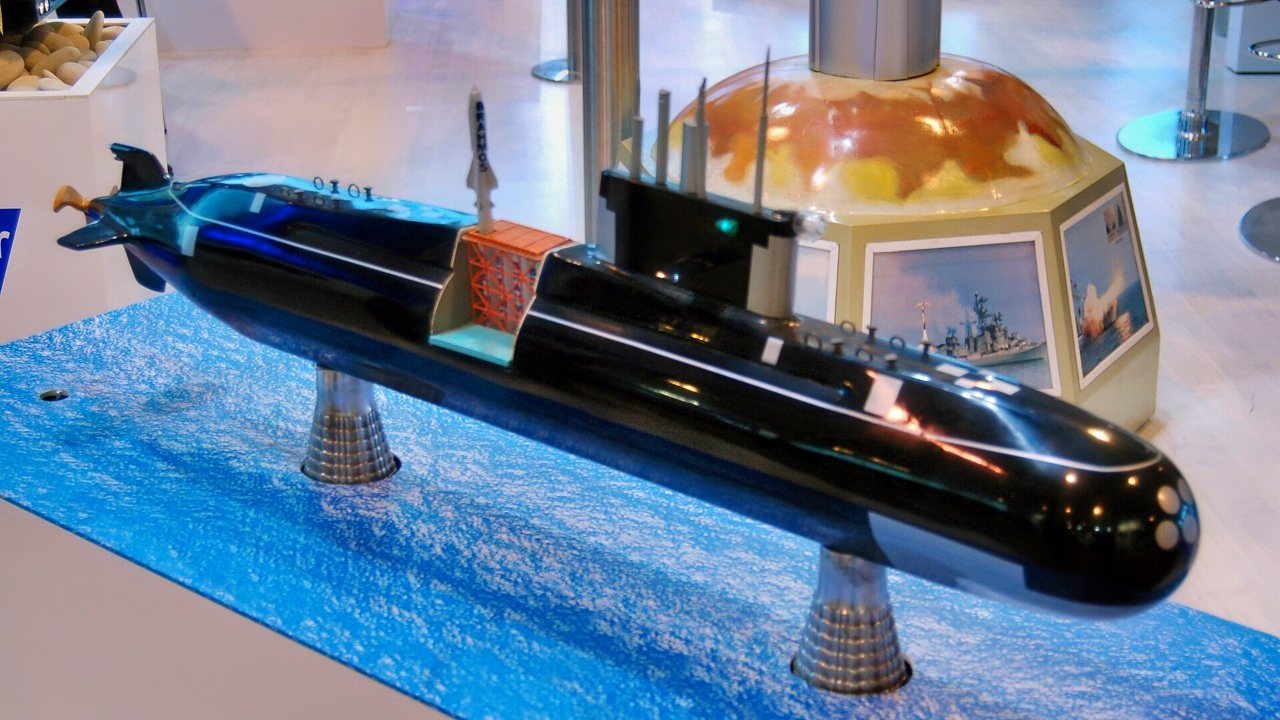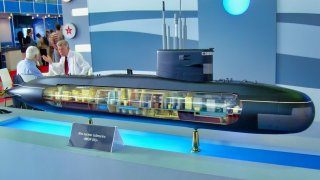Russia's Lada-Class Submarine Is a Total Nightmare
Despite Russia's struggles with its advanced Lada-class submarines, which have faced numerous setbacks including issues with their Air Independent Propulsion (AIP) system, the country remains a significant player in submarine technology.
Summary: Diesel-powered submarines, while less sophisticated than their nuclear counterparts, often excel in stealth, as evidenced by a 2007 incident where a Chinese diesel sub approached the USS Kitty Hawk unnoticed. Despite Russia's struggles with its advanced Lada-class submarines, which have faced numerous setbacks including issues with their Air Independent Propulsion (AIP) system, the country remains a significant player in submarine technology. While the Lada-class has been problematic, causing setbacks including scrapped plans and international collaboration issues, Russia's overall submarine prowess and ability to bounce back from previous decades of decline should not be underestimated.
Russia's Poor Lada-Class
The batteries that power diesel-fuel submarines are generally quieter underwater than are their more sophisticated (and expensive) nuclear-powered submarine counterparts. This explains why so many countries, such as Russia, continue building diesel-fuel submarines—and selling them to the rest of the world.
Diesel Subs Can Cause Problems for Rival Nuclear-Powered Boats
In fact, on multiple occasions, diesel-fuel subs have bested far more complex nuclear-powered systems.
Notably, in 2007, when a diesel-fuel Song-class Chinese submarine got within visual range of the USS Kitty Hawk nuclear-powered aircraft carrier. Part of the reason for why the Chinese diesel sub was able to get so close had to do with the relative silence that submarine’s electric batteries operated in.
The Russians have long been a world leader in submarine design, both in terms of nuclear and diesel submarines. Moscow has made a big show of how they have recovered from the doldrums of the post-Soviet era, when they were leaving their once mighty fleet to rust because the Russian government couldn’t afford to maintain these systems.
Today, Russian shipyards are astounding the world with the level of production they are exhibiting. What’s more, the Russians continue innovating their submarine force, which is likely their greatest asset at sea.
But the Lada-Class proves Russia does not always build such fantastic subs.
The Lada-class Stuck in “Development Hell”
Russia has been working on what they have described as their “fourth-generation diesel submarine,” the follow-on for the ancient Kilo-class submarine that has become ubiquitous in the navies of so many Developing Countries, since at least 1997. Initially under the codename of “Project 677,” it has since been announced that this new class of diesel-fuel submarines is known as the Lada-class.
Yet, this was in what’s known in Hollywood as “Development Hell.” Because for years after announcing the project, the Russian Navy struggled to fund the initiative. In 2004, she was launched and in 2010, the lead sub in the class, the Saint Petersburg, was commissioned. Yet, the Russian Navy did not accept the Lada-class’s lead ship as it did not meet specifications of the Russian Navy.
The second unit of the Lada-class, the Kronstadt, was basically given less sophisticated parts because of the all the problems with the newer systems in the first submarine of the class. Another model was commissioned in December of 2022. One can assume that, it too, will not be as advanced as the Russians had initially intended.
Peter Suciu reported earlier this year that the Russian government officially scrapped the Saint Petersburg and has no real plans for continuing the Lada-class.
One of the biggest issues the Russians had with the Lada-class was the Air Independent Propulsion (AIP) system. It was this system that differentiated the Lada-class from just being a supped-up Kilo-class. The AIP allows for the Lada-class to stay below the sea for protracted periods of time without needing to surface and absorb oxygenated air from the atmosphere.
Of course, this is not a problem that nuclear-powered submarines have at all (which is why they are preferred by so many modern navies). The AIP was meant to increase the undersea operational abilities of the Lada-class over its Kilo-class predecessor. In fact, the AIP system was supposed to ensure the submarines stayed underwater for 45 days.
Yet, the AIP system never functioned as advertised.
The Lada-class, a Sunk Cost, and Italy
The Lada-class represents a sunk cost for the Russian Navy. There is a need in their navy for diesel-fuel capabilities. The Lada-class was originally conceived for coastal defense and operating closer to their shores. If its AIP system did not work as advertised, then it would be a wasting strategic asset.
Further, there had been an export model planned and Russia was jointly developing that project with Italy. The AIP difficulties, however, put that program on ice—and then the Western sanctions imposed upon Russia following their illegal invasion of Ukraine in 2024 killed the project completely.
Russia is Still a Submarine Superpower
There can be little doubt that the Russians missed the mark with their “fourth-generation” diesel-fueled submarine. It never lived up to its hype. But it would be a grave mistake for Western experts to dismiss the Russian submarine threat. Too often, senior Western analysts are colored by the dark lenses of Russia’s post-Soviet existence in the 1990s and early 2000s.
While missteps have been made by Moscow (as all countries make), Russian submarine capabilities remain one of the best—and most fearsome—in the world.

American and NATO naval observers must not confuse the apparent failure of the Lada-class with a larger failure of Russia’s naval industrial base. The fact of the matter is that the Russians have bounced back from the doldrums of the 1990s and 2000s. Whatever one thinks about Russia’s system or its leadership, the fact remains that the Russian Federation is stronger than it was in the 1990s.
And, thanks to their thus far successful illegal war in Ukraine, the Russians appear to be modernizing their defense industrial base at a time when the Americans and their European neighbors are not.
About the Author
Brandon J. Weichert, a National Interest national security analyst, is a former Congressional staffer and geopolitical analyst who is a contributor at The Washington Times, the Asia Times, and The-Pipeline. He is the author of Winning Space: How America Remains a Superpower, Biohacked: China’s Race to Control Life, and The Shadow War: Iran’s Quest for Supremacy. His next book, A Disaster of Our Own Making: How the West Lost Ukraine, is due October 22 from Encounter Books. Weichert can be followed via Twitter @WeTheBrandon.
All images are Creative Commons.


